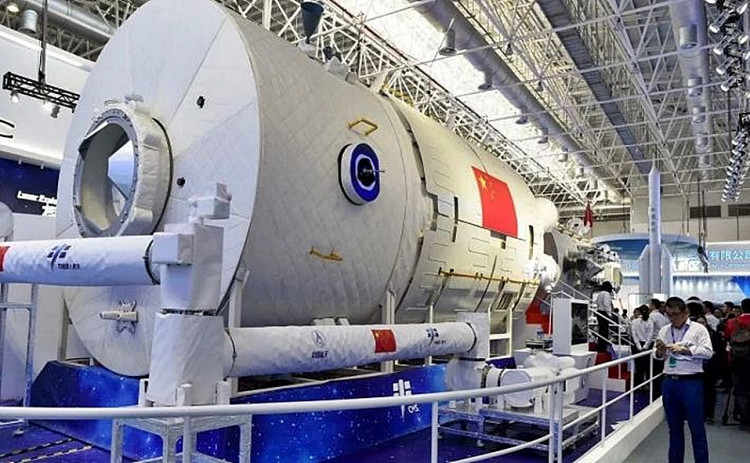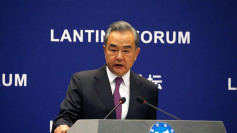China this week unveiled a replica of the core module of its first multi-module space station to be assembled in Low Earth Orbit (LEO) beginning 2020.
The core module and two space labs will combine to form the "Tiangong" (Heavenly Palace) space station, the world's third multi-module space station after Russia's Mir and the International Space Station (ISS).
Tiangong will replace the ISS when this station is retired and abandoned in 2024. It will support three astronauts and should be assembled by 2022.
The 17 meter-long core module named Tianhe, or Harmony of Heavens was a star attraction at the biennial Airshow China in the southern coastal city of Zhuhai. Airshow China is the country's main aerospace industry exhibition.
Tianhe will have three segments: the connecting section; a life-support and control section, and a resources section. It will be equipped with three docking hatches for manned or cargo spacecraft. There will also be two berthing locations used to connect with the space laboratories. There will also be a hatch for astronauts on extravehicular activities (EVAs)
Tianhe will be 16.6 meters long and will have a diameter of 4.2 meters. It will be central to the space station's operations because astronauts will live there and control the entire station from inside it. The module will also be capable of housing scientific experiments.
The entire space station will consist of Tianhe or the Core Cabin Module (CCM); the Laboratory Cabin Module I (LCM-1) and the Laboratory Cabin Module II (LCM-2) and a cargo transport craft named "Tianzhou" (Heavenly Vessel).
LCM-1 and LCM-2 are each 14.4 meters long, with the same maximum diameter and launch weight of the core module. Tianzhou will have three versions: pressurized, unpressurized, and a combination of both.
China will start assembling Tiangong in 2020, based on a government timetable. A Long March 5B heavy-lift rocket, which is still in development, will place the station's core module into orbit in 2020. Four manned spaceflights will send taikonauts to assemble Tiangong.
The space station should be fully operational by 2022. It will have a service life of 15 years, according to the China Academy of Space Technology, developer of the space station.
When assembled, Tiangong will hold more than 10 tons of scientific and experimental equipment. It will have 26 internal payload cabinets. There will also be 67 external hatches designed to dock with medium-sized extravehicular apparatuses and four external points for towing large instruments.
Once the ISS retires in 2024, China will be the only country with the manned in-orbit space station.






